How do you make magic milk or color changing rainbow milk? Let us show you how easy and fun simple science experiments can be! The chemical reaction in this magic milk experiment is fun to watch and makes for great hands-on learning. The perfect kitchen science as you already have all the items for it in your kitchen. Setting up science experiments at home is easier than you think.
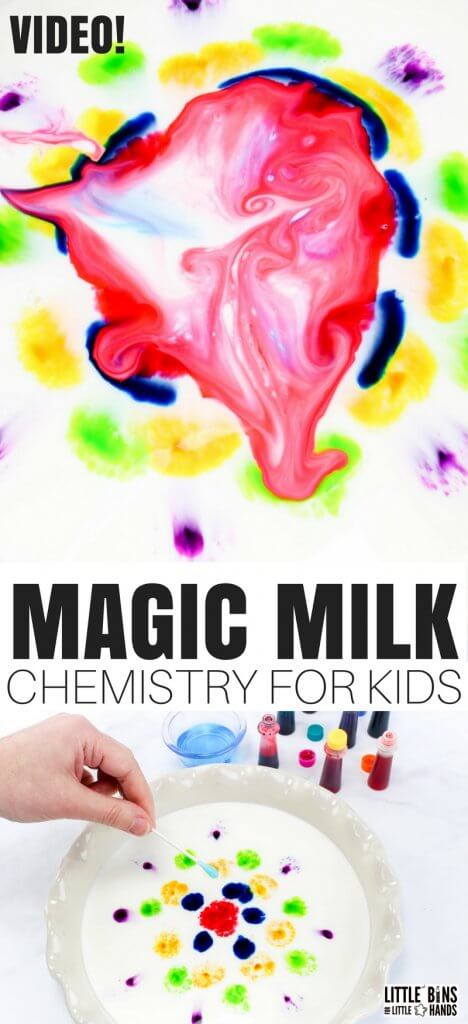
WHAT IS MAGIC MILK?
We love super simple science experiments that you can pull out on a rainy afternoon (or in any weather). This magic milk experiment has to be one of our favorites and definitely for science experiments with milk!
Kids are naturally curious, and sharing fun, simple science activities at home or in the classroom is just another way to get kids to learn. We love to keep our science playful too! No two magic milk experiments will ever be the same!
Click here to get your free printable science guide!
Magic Milk Science Experiment
If you want to make this truly a science experiment or even a milk science fair project using the scientific method, you need to change one variable. You could repeat the experiment with different types of milk, such as skim milk, and observe the changes. Learn more about the scientific method for kids here.
SUPPLIES:
- Full Fat Milk
- Liquid Food Coloring
- Dawn Dish Soap
- Cotton Swabs
NOTE: There are so many fat percentages available that the milk used is a fantastic variable to consider! Low-Fat Milk, Skim Milk, 1%, 2%, Half and Half, Cream, Heavy Whipping Cream…
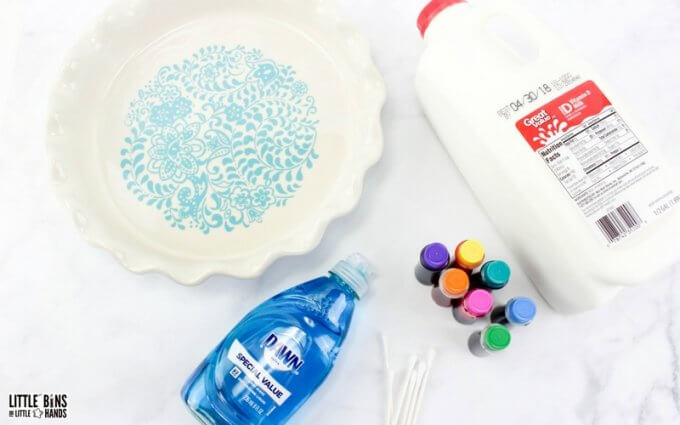
MAGIC MILK INSTRUCTIONS
STEP 1: Start pouring your whole milk into a shallow dish or flat bottom surface. You don’t need a lot of milk, just enough to cover the bottom and then some.
If you have leftover milk, try our milk and vinegar plastic experiment!
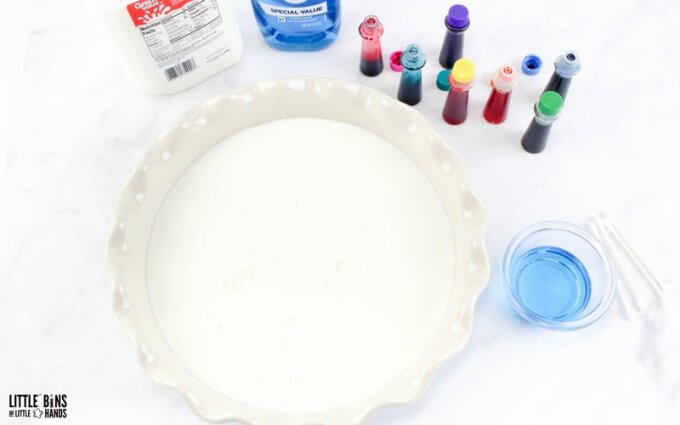
STEP 2: Next, you want to fill the top of the milk with drops of food coloring! Use as many different colors as you like.
TIP: Use a variety of colors or give your magic milk experiment a theme for the season or holiday!
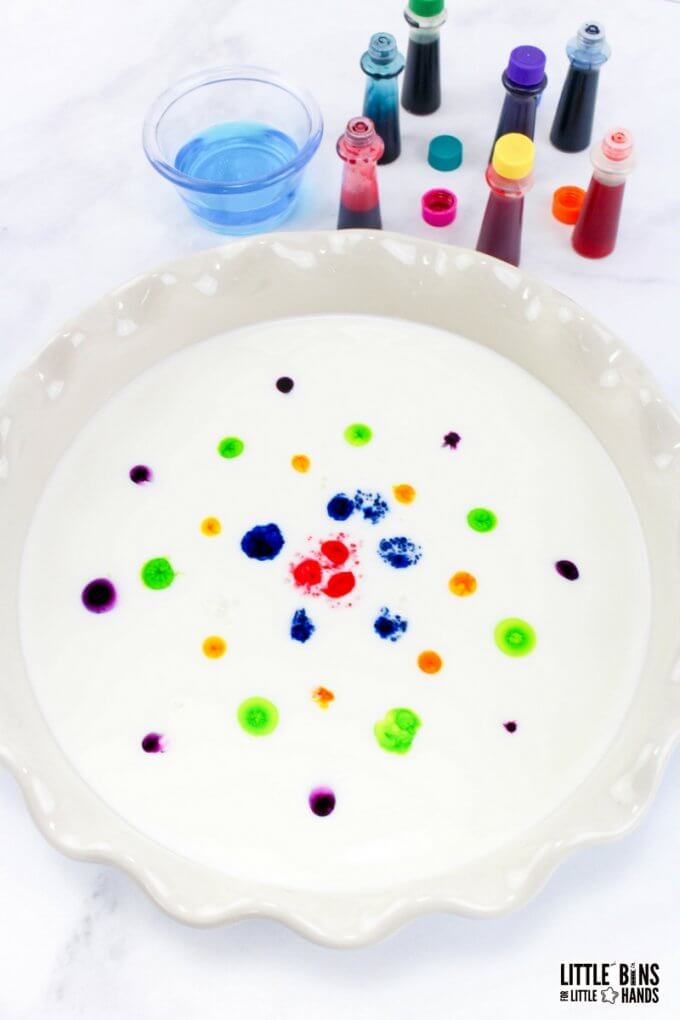
STEP 3: Pour a small amount of dish soap into a separate bowl, and touch your cotton swab tip to the dish soap to coat it. Bring it over to your milk dish and gently touch the surface of the milk with the soapy cotton swab!
TIP: Try a cotton swab without dish soap first and see what happens. Talk about what is observed, then try the dish soap-soaked cotton swab and check out the difference. This is a great way to add more scientific thinking to the activity.
What happens? Make sure to read about how the magic milk experiment works below!
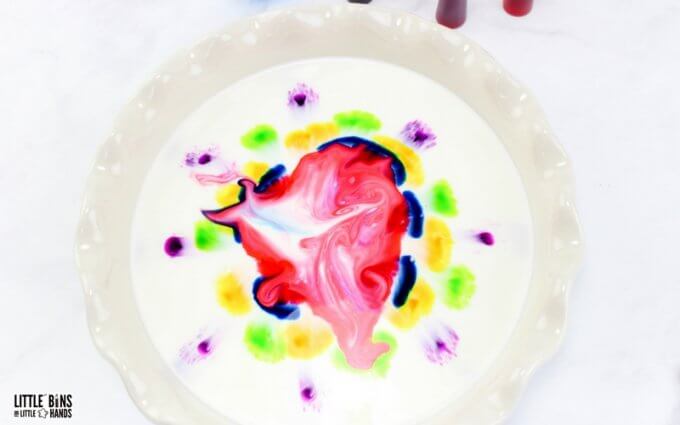
Remember, each time you try this magic milk experiment, it will look slightly different. It’s a fun fireworks science activity for the 4th of July or New Year!
Also, check out: Fireworks In A Jar Experiment
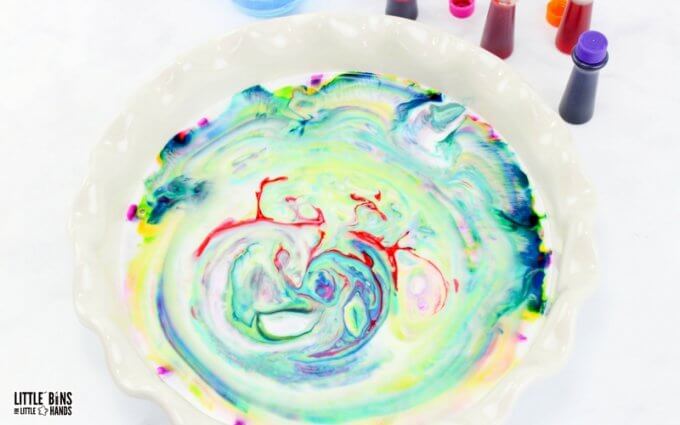
HOW DOES THE MAGIC MILK EXPERIMENT WORK?
Milk is made up of minerals, proteins, and fats. Proteins and fats are susceptible to changes. When dish soap is added to the milk, the soap molecules run around and try to attach to the fat molecules in the milk.
However, you wouldn’t see this change happen without the food coloring! The food coloring looks like fireworks because it’s getting bumped around, a color explosion.
The soap lowers the surface tension of the milk. When the soap molecules head for the fats, they form spherical micelles. This causes movement and creates cool bursts and swirls of color. After all the fat molecules have been found and equilibrium has been reached, there is no more movement. Are there any more hiding?
Try another cotton swab dipped in soap!
QUESTIONS FOR REFLECTION
- What did you notice before and after?
- What happened when you put the cotton swab in the milk?
- Why do you think that happened?
- Why do you think the colors stopped moving?
- What else did you observe?
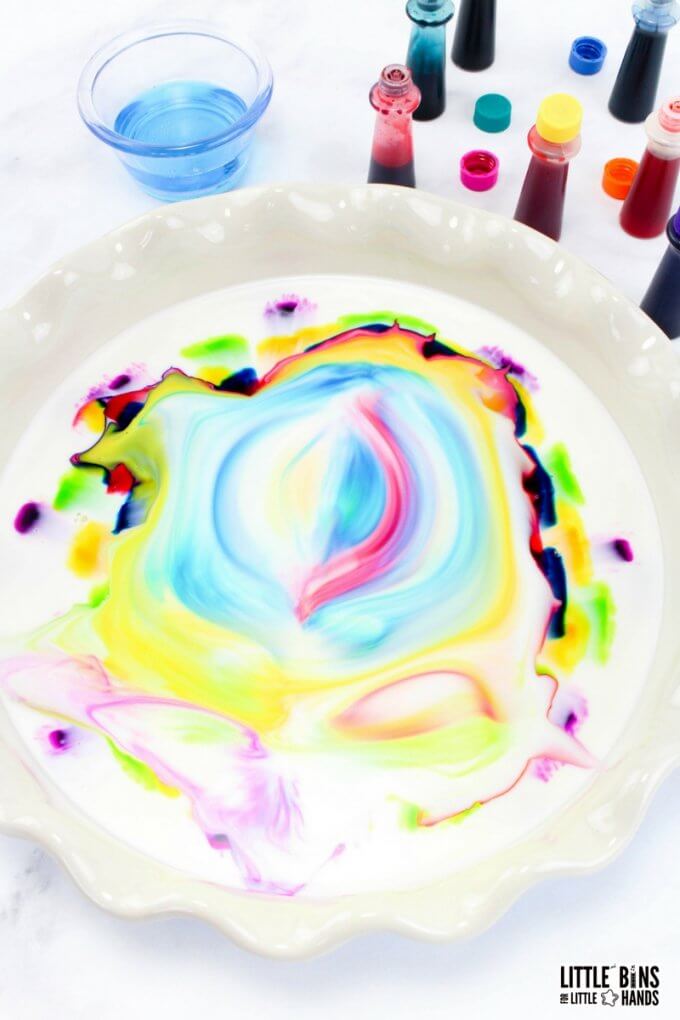
MORE FUN COLOR-CHANGING MILK EXPERIMENTS
Magic milk experiments are super easy to create themes with for different holidays! Kids love mixing in a favorite holiday with science. I know this from experience!
MORE FUN SCIENCE EXPERIMENTS TO TRY
Love seeing chemical reactions? Check out our list of chemistry experiments for kids.
- Skittles Experiment
- Baking Soda and Vinegar Volcano
- Lava Lamp Experiment
- Growing Borax Crystals
- Diet Coke and Mentos Experiment
- Pop Rocks and Soda
- Magic Milk Experiment
- Egg In Vinegar Experiment

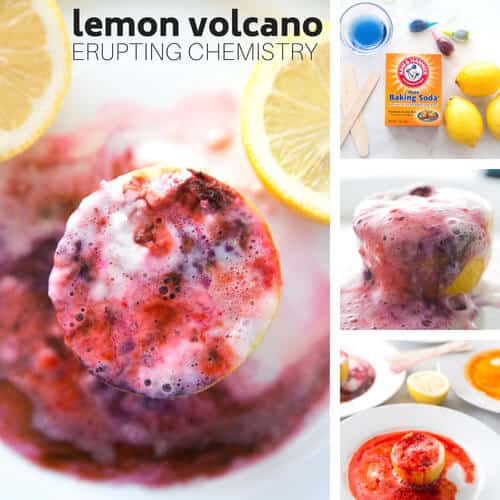
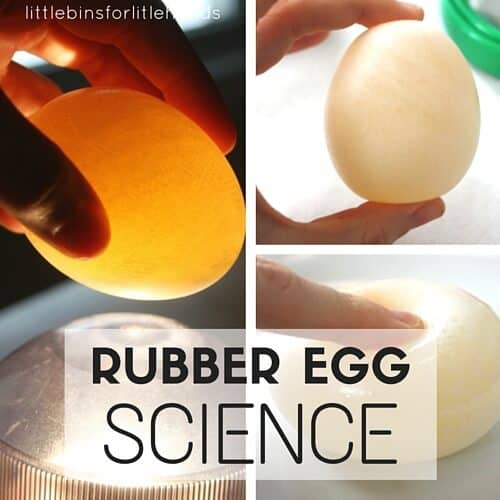
Printable Science Projects Pack
If you’re looking to grab all of our printable science projects in one convenient place plus exclusive worksheets and bonuses like a STEAM Project pack, our Science Project Pack is what you need! Over 300+ Pages!
- 90+ classic science activities with journal pages, supply lists, set up and process, and science information. NEW! Activity-specific observation pages!
- Best science practices posters and our original science method process folders for extra alternatives!
- Be a Collector activities pack introduces kids to the world of making collections through the eyes of a scientist. What will they collect first?
- Know the Words Science vocabulary pack includes flashcards, crosswords, and word searches that illuminate keywords in the experiments!
- My science journal writing prompts explore what it means to be a scientist!!
- Bonus STEAM Project Pack: Art meets science with doable projects!
- Bonus Quick Grab Packs for Biology, Earth Science, Chemistry, and Physics
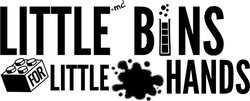


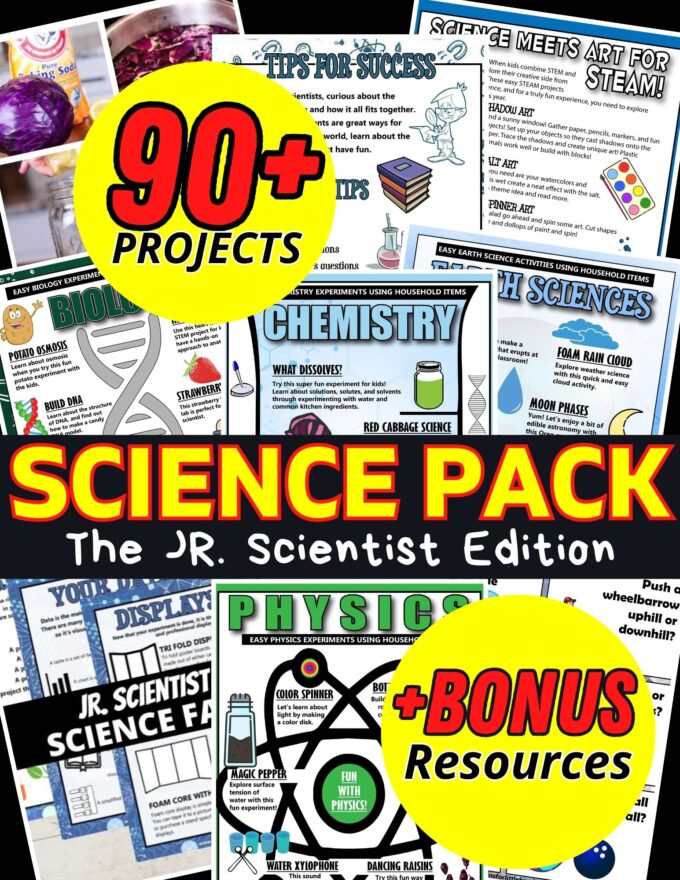
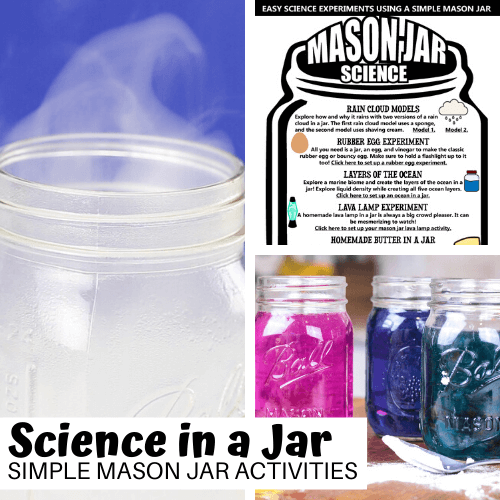
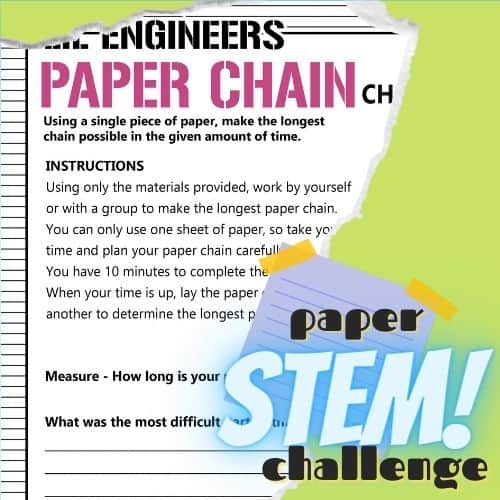
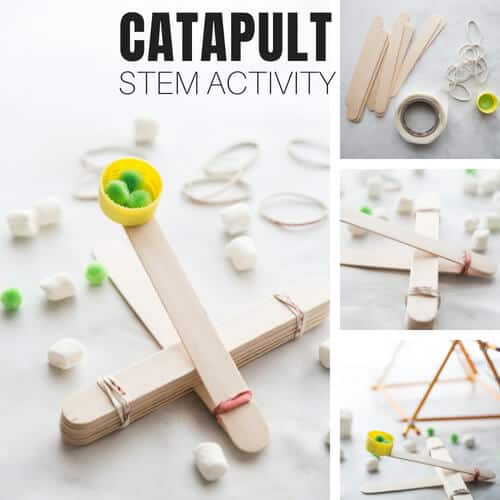
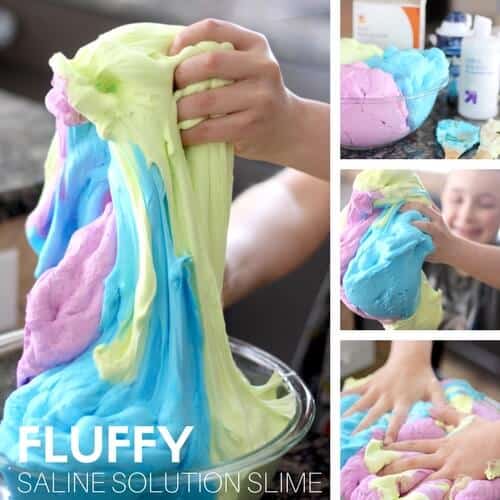
This activity is a staple in my house! 🙂 I wanted to say that, even though you say it’s great for little kids, my older kids (6 and ELEVEN) still love this, too!!! I’m not kidding- my eleven year old son asked to do magic milk last month. 🙂 Great fun!
Hi,
This looks like a terrific idea to do with my kindergarten class! However, is there a possible substitute I can use for the milk?
Interesting and funny experiments. I like fireworks activity. A ton of value in cheap science activities and experiments.
My son suggested swapping out the soap for sanitizer and it is awesome. The color just explodes!
The experiment was fun. We read the explanation about the soap attaching to the fat molecules. We tried it with fat free milk and the same result occurred. Why?
I things with my 4 year old grandson, and this was amazing, we did over and over and when his mom came home from work, he had to show her.
Thank you so much for sharing, as on a limited income your free things help me help him learn.
Sincerely, it was fun looking forward to the next experiment.
Awesome! So glad to hear he loved it that much!